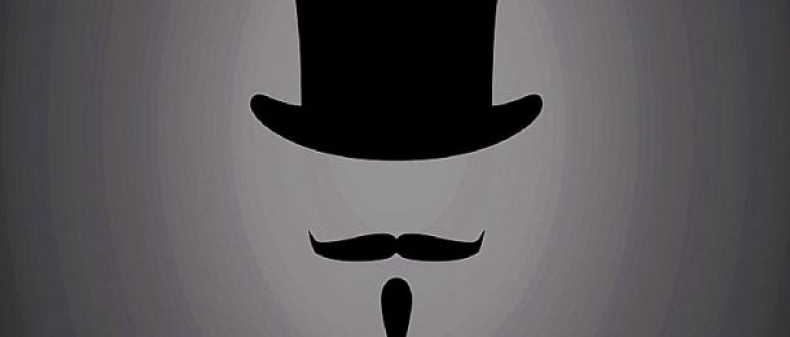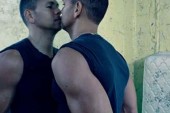
Yesterday I interviewed Erik Danielsson, the vocalist, bassist and lyricist of Watain, a Swedish black metal band who have become infamous for performing on stage doused in rancid pig’s blood, surrounded by offal and animal heads. I’ve seen them perform live twice and both times my clothing was so disgusting by the end of the night I threw it all away, completely unwilling to perform an exorcism on my laundry.
Speaking with him was a lot like I imagine a pleasant fireside chat with Dracula would be: he was eloquent and collected, considering his words thoughtfully and affording me great courtesy and attention. His manners were impeccable. The most interesting part of the conversation, for me, was the few moments where we veered into discussing his religious beliefs and how they translate into his music; Danielsson is an avowed satanic theist.
For him, it’s a question of adversity — or, rather, being the adversary. Danielsson said that he believes that being constantly challenged, being in an adversarial relationship with dominant culture, strengthens and defines him. “It’s always been easy to define myself as the other,” he said. Being the symbolic representation of what most people would define themselves against, being in an adversarial relationship with the world, was not only something that Danielsson was able to survive, but something he actively sought after and even thrived within. He was very happy, very comfortable being a villain.
I Wear The Black Hat is not a comfortable engagement with villains and the idea of villainy; in fact, it revels in its deep discomfort with the subject, luxuriates in it, soaks in itchy and occasionally squicky simultaneous attraction and disgust that we have for cultural villains. Chuck Klosterman’s series of essays on villains and the way villainy works isn’t pure glorification in that regard — some villains aren’t romantic or glamourous, just evil — but the way villains make us rub against our own discomfort, and how we simultaneously find them thrilling, attractive, and repulsive.
Or, rather, the book explores how Chuck Klosterman thinks about villainy. Throughout I Wear The Black Hat, Klosterman uses the authoritative “we” voice, speaking for his readers as a whole and how they navigate the murkier waters and monsters in pop culture. However, in his appearance in Toronto on July 23 at the Gladstone, in conversation with Stuart Berman, Klosterman openly admitted that I Wear The Black Hat had something in common with the majority of his books, in that “it is all about [him].”
Like most of his readers (he assumes, I think, correctly), Klosterman tends to root for the villain. Though, speaking to Berman, he says he thinks the usual offhanded comment that “villains are more interesting” is fundamentally flawed. “When people speak that cliché,” Klosterman explains, “what they’re actually saying is the villain is more real than the hero.” Our motives tend to be very small and ordinary, often selfish; we have a hard time accessing or even understanding the lofty ideals of heroes. But we “understand the villains; they have problems, their desires usurp their goals, their weakness leads to strength, and that feels real.” We have a sympathy, a shared experience and a sneaky camaraderie with villains that heroes cannot hope to share.
The villains that Klosterman examines in I Wear The Black Hat are not all figures we would want to identify with, however, and rubbing against that discomfort forms a lot of the appeal, and complexity, of the book. Many are entirely repellent, especially real figures from history (far and recent) who have done unspeakable things, from Hitler and Stalin to Jerry Sandusky and Ted Bundy. But even in our disgust with serial murderers and child molesters and genocidal dictators, Klosterman explores the way in which these figures continue to fascinate us even as we are repulsed by them. We follow their narratives obsessively, consume the details of their crimes ravenously, want to know every gory and bloody detail.
It’s in this way, exploring the way that we are fascinated by even the most terribly and often terribly real villains in our cultural narratives, that Klosterman effectively positions media, and the consumption of media itself, as a potentially villainous character. The way that stories are framed, villains identified and judgement cast becomes it’s own kind of villainy. In conversation with Berman, Klosterman noted that never before has media been so full of villains, nor have readers been invited to participate in that narrative so actively. Klosterman believes that media has become “something to respond to” on a scale never possible before comments sections, which he calls a “mechanism that exists to make it a lot easier to hate somebody.”
The most fascinating and troubling part of I Wear The Black Hat engages with how villains are made, and how that is changing dramatically in a world of competing news outlets and social media. The way we build narratives is changing, and the way characters are cast is evolving as well. Klosterman explores this hostile narrative terrain in looking at divisive figures like Julian Assange and Sarah Palin, heroes and saviours to some people, representatives of corruption and evil to others. But perhaps the most chilling, and most wonderful moment in the book where Klosterman takes a look at Batman, vigilante heroes, and the narratives of social media and the news. “Let’s pretend Batman is real,” he writes, someone you hear about first through anecdotes, then starts trending on Twitter, then becomes the subject of editorials and news stories, devoid of back story of intimacy or personal connection, entirely mediated through the media machine. He is the subject of conspiracy theories, political rants, fashion spreads. As public opinion fractures, and the truth becomes harder to pin down and ever farther from the narrative being built, Klosterman asks, “do you root for this person, or do you want them arrested?”
This is the most chilling part of reading I Wear The Black Hat, the slow, creeping dread that identifying villains is a messy, grey, indefinite process, one in a constant sate of flux and nearly entirely created by emotion and opinion. There are real monsters, but what is more frightening is how hard it can be to find them and separate them from people only portrayed or identified or otherwise figured as monsters. This is when I Wear The Black Hat is at is most genuinely troubling, and best.
____
Natalie Zina Walschots is a poet and music writer based in Toronto, Ontario. Her second book of poetry, DOOM: Love Poems for Supervillains, was published by Insomniac Press this spring. You can follow her on Twitter at @NatalieZed.
For more, follow us on Twitter at @torontostandard, and subscribe to our newsletter.













